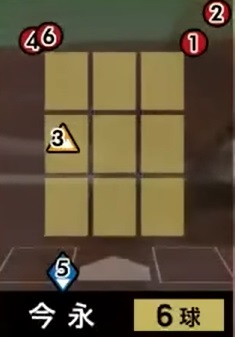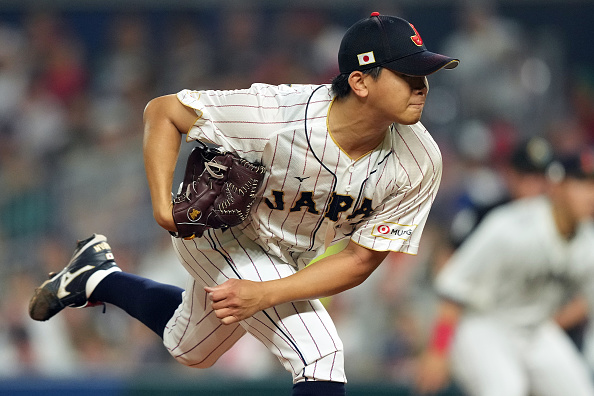The less heralded of the NPB pitchers due to arrive stateside this offseason, Shota Imanaga should not be slept on or considered an afterthought.
While Yoshinobu Yamamoto is garnering all the attention and headlines (and deservedly so), Imanaga is an excellent pitcher in his own right, albeit without the same caliber repertoire or ceiling as Yamamoto.
Imanaga is a 30-year-old, left-handed pitcher who has dominated the NPB since joining the league as a 22-year-old. His career numbers of a 3.18 ERA, 9.2 K/9, and 2.5 BB/9 show just that. He is also coming off a phenomenal season in which he raised his K/9 to 10.6 and lowered his BB/9 to 1.5, both elite figures. Where Imanaga differentiates himself is his knowledge of pitching, or “pitchability.”
Repertoire
Imanaga’s strength is in his ability to sequence his pitches, combined with a superb knowledge of how to attack hitters, which will translate beautifully to MLB. He does not throw hard, but hard enough, especially for a left-handed pitcher, consistently sitting at 93-94 mph with his four-seam fastball. He can use his fastball both to get ahead and to put away hitters and rarely throws it over the meaty part of the strike zone. His command of his fastball is elite and he has outings in which his fastball has only sat on the exterior borders of the strike zone.

He also throws a curveball, which has two-plane break or 1-9 movement (on a clock), and mainly uses it to get ahead in counts. After all, while it has excellent shape, it lacks sharp break. He has no such problem with his slider which is straight-up dirty. While he can throw the pitch for strikes, he mainly uses it off the plate as his put-away pitch. He throws it to both right-handed and left-handed batters and usually spots it outside or low-and-away to left-handed hitters. This pitch generates a lot of swing-and-miss.
His cutter, which sits at around 90-91 mph, is mainly used as a means of getting in on right-handed hitters’ hands. This pitch has good lateral movement and late life as it cuts in on right-handers. Yet, what sets this pitch apart is Imanaga’s consistency in locating it. He rarely leaves it down or over the plate and is therefore able to use the cutter to its fullest potential.
He also throws both a sinker and splitter to round out his six-pitch mix. Those two pitches are used more sparingly as Imanaga’s out-pitch of choice is usually his slider, followed closely by his fastball. But against right-handed hitters, he will use the splitter to get them to chase outside the zone.
The sinker is definitively his least noteworthy pitch; it is similar to his four-seam fastball but without the excellent spin rate. It has more tail (lateral movement) than sink and he rarely throws it to left-handed hitters. He usually uses it to jam right-handers or induce weak contact and ground balls.
All things considered, his fastball is his best pitch as it has lots of late life, probably due to its excellent spin rate. Yet, as with all things with Imanaga, his fastball plays up because of how he uses it, the way he mixes his pitches, and its excellent location.
Mechanics
What distinguishes Imanaga from many pitchers are his fluid and efficient mechanics as well as his ability to repeat them without a hiccup. His mechanics are as close to textbook as can be and play a huge part in Imanaga’s ability to locate his pitches so well. His mechanics start with perfect balance over the rubber. He gets excellent load from properly leveraging his lower half, stays square through the pitch, and decelerates his arm and body in an extremely calm manner.

Mechanics play a huge role in consistency, command of pitches, spin rate, and long-term sustainability and health. This is doubly important for a pitcher who is already 30 years old and is on the smaller side at only 5-foot-10. His ability to command the baseball is a skill that not many have, and there are few active major league pitchers who can rival his excellence in this field.
This is why Imanaga is my favorite pitcher available this offseason. His skillset makes him uniquely adaptable to MLB as he has all the tools to thrive immediately. You don’t have the same level of risk with him as someone like Yamamoto. Yamamoto leverages extreme torque in his delivery which he uses to create all that power. He throws in the upper 90s and is only 25 years old, yet his ability will erode as he ages and his mechanics are too violent and may lead to arm trouble down the road. Instead, Imanaga uses smarts, finesse, and technique to confuse hitters and keep them off balance.
Imanaga was an ace in Japan, and as we have grown accustomed to aces being power pitchers, he is more than capable of changing the paradigm in MLB. While not many believe that to be the case, I would be far from surprised if Imanaga becomes a top-2o or top-30 pitcher in 2024, wins Rookie of the Year, or even appears in the All-Star game. That’s how talented he is.
The man knows how to pitch, and we must accept this new reality in which aces do not need to throw 99 mph.
Main Image Credit:







